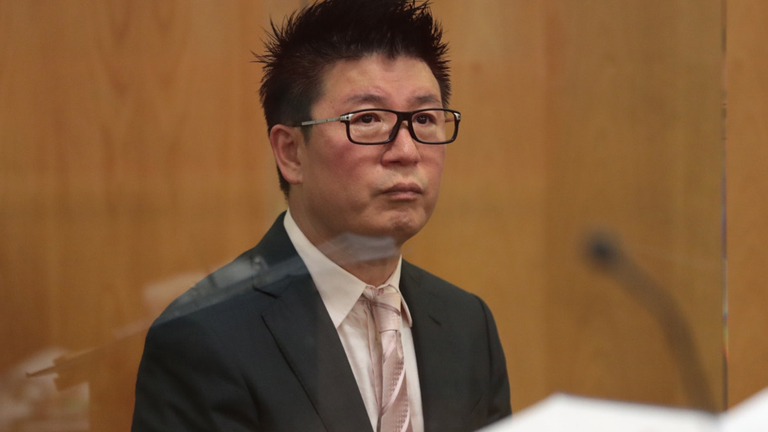The gap years you don't want
Young people take gap years for OE - but senior citizens face a "gap" of more difficult dimensions.

Lisa and Oliver McDougall got a big fright when they peered over the edge of what they now call ‘The Gap Years’.
The two residents of Auckland’s North Shore thought they were sitting reasonably comfortably when it came to impending retirement. They are 65 and both are still working, they own a house and thought a simple downsizing would be enough to see them right.
Then they did the maths – and discovered the Gap Years… the gap between what they thought they’d need in terms of financial resources and what they will actually require.
The McDougalls (not their real names; they’ve been changed to protect their identities because of the financial information in this story) are better off than some. They own their house, valued at about $1.1m, with a small mortgage of about $100,000. They have about $200,000 in KiwiSaver and savings. Those are their major assets and, between them they currently earn about $230,000 a year before tax.
“But we hadn’t done a budget for some time and what we found was pretty surprising,” Lisa says. “We were not only spending a lot more than we thought, but it became obvious that we have quite a gap between what we thought we’d need when we stop working and what we will actually need.
Oliver takes up the story: “We have always known we would have to manage our house situation by downsizing and cashing in on the value of that asset. We have also always known that we would have to tighten our belts quite a bit from our standard of living today.
“But we got a bit of a fright when we saw the gap and when we saw how little the pension will actually help to fill it – and I think we need some good financial advice now.”
Here’s how the McDougalls’ financial circumstances add up:
Assets and income (assuming both stop working):
- House - $1.1m
- Savings - $200,000
- National superannuation - $24,400 a year or $2033 a month
Outgoings: All their billed expenditure comes to about $5000 a month, including food & drink, rates, mortgage repayments, petrol and insurances for their cars, home, health and life insurances, telephone bills, Sky, security, water, power and once-a-week cleaners.
So that’s the gap they are worrying about bridging: About $5000 a month outgoings versus about $2000 a month income, presuming both have stopped working – a gap of $36,000 a year.
If the McDougalls sell their house for $1m (after repaying the $100,000 mortgage) and buy somewhere for $750,000, that means they have $450,000 in capital ($200,000 in savings and $250,000 from the sale of the house once the mortgage is cleared, less transaction costs).
At current bank rates, they can expect to get 4.1 per cent interest on term deposit over a five-year period. Investing $450,000, the return amounts to $92,250 before tax. That is $18,450 a year (or about $1500 a month) over the five years.
So their downsizing and freeing up of capital means they are still approximately $18,000 a year short of the amount needed to continue their current lifestyle.
“We still have options though we clearly won’t have much of a discretionary income when we stop working,” says Oliver. “We can continue working, though we can’t count on that happening forever, and we can cut outgoings.”
The couple reckon they can, by clearing their mortgage and cutting back on many of their bills, get their outgoings down from $5000 a month to $3000 a month. But they still have a gap: $3000 a month income versus $2000 a month from the pension – the gap now $12,000 a year.
On that basis, the term deposit investment mentioned above would leave them with about $6000 a year for discretionary spending – not much.
Another option is a relatively new financial product in New Zealand – the lifetime income fund. This is a step up from the old annuity investment, where the retiree hands over a lump sum to an insurance company or similar manager and a fixed sum is paid out at regular intervals until death.
Under such schemes, any remaining capital is the property of the company; the sooner the retiree dies, the greater the profit for the company.
The new lifetime income funds ensure the capital remains the property of the retiree. The money is invested and a fixed sum of money is paid out to the retiree at regular intervals, less an annual fee and tax. The retiree also pays an annual longevity insurance premium from their KiwiSaver fund. This guarantees that, should their capital run out before they die, they will continue to receive the regular income for the rest of their lives - paid out of insurance. If there is capital left when the person dies, it's paid into the estate.
Using the lifetime income fund calculator from Britannia Financial Services Ltd, the McDougalls’ nest egg of $450,000 will, if invested in such a fund, return them $865.38 a fortnight for the rest of their lives – or $22,500 a year, outperforming the five-year term deposit by about 20 per cent.
That boosts their income (after they have stopped work) to almost $47,000 a year – with their tightened belts meaning outgoings of about $36,000.
“It’s still not much,” says Oliver who says he will investigate a life income fund option. “But at least we’d be on the right side of the gap, that lump sum would remain ours so we have something to leave for the kids and we could recoup that capital at any stage.”
* Britannia’s Lifetime Income Fund combines investment with insurance to give you a retirement income for life. No matter what happens to interest rates or financial markets, your income is insured to last the rest of your life. For more information: https://britanniafinancial.co.nz/lifetime-income-fund. Disclosure Statements for Britannia’s Authorised Financial Advisers are available on request and free of charge. Phone 0800 663 663. The Product Disclosure Statement for the Britannia Retirement Scheme is available from Britannia Financial Services Limited at www.britanniafinancial.co.nz






